To meet the growing demand for electrification, manufacturers are designing more powerful electric actuators for mobile equipment.
Mobile equipment such as fork lifts and other off-highway equipment is changing. With more emphasis on rethinking the drive systems for this type of equipment, there is a slow but steady turn toward other drive technologies, one of these being electric actuation.
Electric actuators for mobile machinery have seen a steady uptick for a number of reasons. For one, electrification is a broad trend across all mobile machinery. This is due to a number of reasons including legislation to reduce CO2 emissions, limits on noise emissions in urban centers, and growing sustainability targets pushing for improved energy efficiency.
The fact is that over the years electric actuators have gotten more powerful, with power densities comparable to old standbys such as hydraulic systems. Another is the simplicity of electric actuators themselves; they are a lot simpler to install and maintain than other systems. Electromechanical actuators have steadily replaced hydraulic cylinders in a few places, including auxiliary control and steering functions.
As a result, manufacturers are designing systems and actuators to accommodate these changes. A case in point is the linear motion and actuation company Ewellix.
Electric linear actuator kits
Take the new e-MOVEKIT from Ewellix. It’s aimed at helping designers and manufacturers of mobile machinery simplify the specification, assembly, and testing of electric linear actuation systems.
The e-MOVEKIT was developed in response to the growing trend towards electrification of motion systems in mobile and off-highway equipment. In particular, the demand to replace traditional hydraulic devices with a new generation of electric actuators that offer high levels of power-density, greater maximum force capacity, energy efficiency, safety, and reliability.

The new e-MOVEKIT is a complete system with all the components that are needed to drive and control linear motion in mobile machinery fitted with a 24-V power source, with either analog or CAN-bus standard controls.
At the heart of each e-MOVEKIT is an advanced modular electric actuator. These are designed to be used with a wide range of high-performance motors, gearboxes and end attachments, all of which are supplied as part of each kit. Each kit includes all the connectors, cables and mounting attachments needed to simplify installation. The electric actuators offer a range of benefits to be easily built into each machine. For example, regenerative braking can be initiated when each actuator is being driven under load, while safety features such as a descent speed limiter, back-up nut and electromechanical motor braking can easily be incorporated.
The concept behind the e-MOVEKIT is to make it easy for engineers who are already experienced in linear motion, as well as those who may not have previously worked with electric actuators, to be able to quickly and easily specify, customize and configure a linear actuation system for mobile equipment. With the simplicity and speed of specification that the e-MOVEKIT offers, it makes it suitable for both prototype development projects as well as full-scale equipment build.
The kit looks to transform the way electric linear actuators are specified and used by OEM designers, providing a plug-and-play option for replacing traditional hydraulic cylinders, while helping to reduce design complexity and commissioning times.
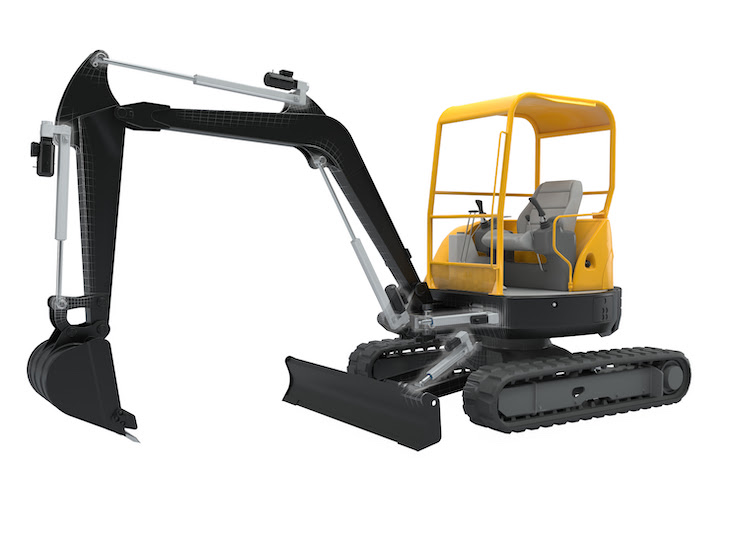
Comparing electric and hydraulic actuators
It’s an old debate with a new sense of urgency — hydraulic actuation or electric?
For many years, hydraulic actuation has been the go-to choice for applications requiring high force. Hydraulics are generally understood to be rugged and relatively easy to deploy. What’s more, the cost per unit of force is lower than for other actuation methods. That’s in part why hydraulic actuation has been the standard choice in applications requiring large force including in mobile equipment as well as in other industrial uses.
For example, because of their high operating pressures (typically ranging from 1,500 to upwards of 5,000 psi) hydraulic cylinders can produce high forces of well over 100,000 kN. Also, because hydraulic cylinder force is a product of pressure and area, high forces can be achieved by relatively smaller cylinder sizes with high pressures.
One of the most common alternatives to hydraulic cylinders are electric rod-style actuators. These electric actuators offer more flexibility and precision than hydraulics in addition to being more reliable, with less maintenance involved than what is needed for hydraulic systems.
However, it’s still the case that hydraulic systems offer more force than electric actuators, although electric actuators have been catching up. In fact, newer product offerings are capable of output forces that comparable to some higher-end hydraulic cylinders, making them a viable option for replacing hydraulic systems in many instances, including mobile equipment and off-highway applications.
A new generation of electric actuators
Ewellix has specifically designed electric linear actuators for use in mobile applications. From agricultural and construction machinery to lift platforms, these new actuators combine greater power-density with high levels of energy efficiency, position and motion control and repeatability. The first products to be released later this year will include actuators with 3-ton and 15-ton lift capacities, with future versions to include intermediate capacities as well as an electromechanical steer-by-wire option.
The new actuators were developed to help OEMs transition from traditional hydraulic power to electrically controlled motion systems. In part- icular, these will offer a reliable and efficient alternative that is clean, simple to install and use, with a lower total cost-of-ownership. It can offer even more with regenerative braking when the actuator is being driven under load. To achieve all functions as a hydraulic cylinder, the CASM actuator can be equipped with safety features such as a descent speed limiter, back-up nut, and electromechanical motor braking.
This new generation of products has been developed from Ewellix’s CASM series of electric actuators and shares the same robust, modular construction. The new actuators add a more compact design, a wider range of end-attachments and an even higher efficiency motor package, with IP ratings that meet the needs of tough off-road environments.
The new 3T actuator delivers 3.6 kW peak power output, at the cross section of 80 x 80 mm. The 5T actuator (CASM- 100) delivers 10 kW peak power output at the narrow cross section of 105 x 105 mm of the linear unit. And the 15T actuator supplies 17 kW of peak power output at 130 x 130 mm.

The modular construction of the new actuators will also give design engineers and OEMs added flexibility. For example, it will be possible to choose ball-screw or roller-screw drive mechanisms, different high- performance motors, and either parallel or in-line gearbox options. Plus, designers can configure the base actuator components, including attachments like the T-bar, the pivot and the rear attachment that connect each cylinder to the moving parts on mobile or off-road machinery.
The new generation of actuators are being engineered to provide a long and reliable operating life, with minimal maintenance requirements. Depending on the configuration, it will be possible to achieve maximum linear speeds (unloaded) up to 300 mm/sec, at accelerations of up to 6 m/sec, and stroke lengths of up to 2 m.

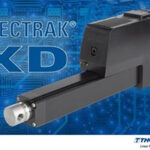
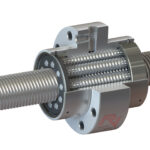
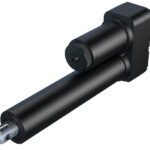
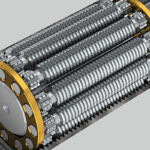

Leave a Reply
You must be logged in to post a comment.